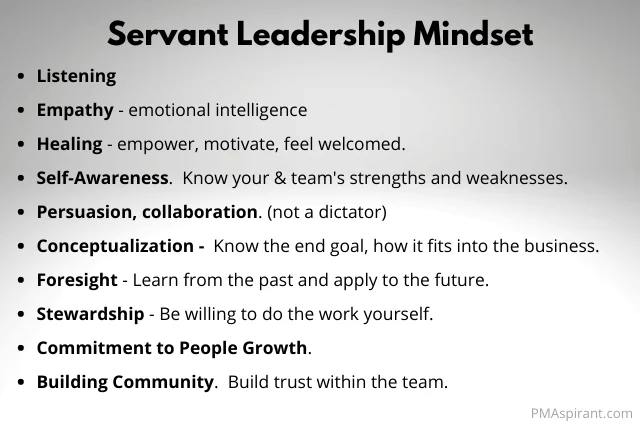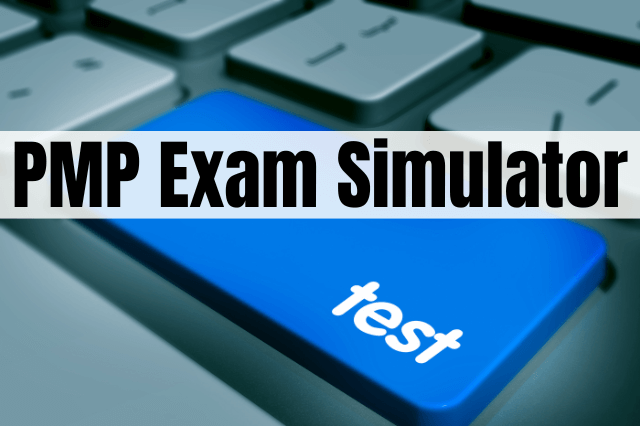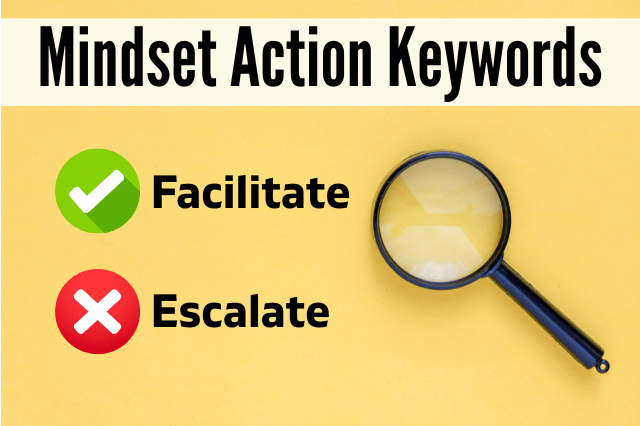Last Updated on September 16, 2025 by andrewshih
Are you getting ready for the PMP Exam and looking for PMP study tips?
If so, you are in the right place. PMP exam is not an easy exam and about a third of PMP aspirants fail the exam. It is going to take a few months of hard work to prepare for the PMP exam. In this article, I compiled the top PMP study tips to help you prepare for the test as well as PMP exam tips for tackling the PMP exam questions.
- PMP Study Tips #1: Review the Exam Content Outline
- PMP Study Tips #2: Read the PMBOK Guide Properly
- PMP Study Tips # 3: Read the Agile Practice Guide
- PMP Study Tips # 4: Pick a PMP Exam Study Guide That Works for You
- PMP Study Tips # 5: Pick a PMP Training Course That Fits Your Learning Style
- PMP Study Tips # 6: Use Quality Exam Simulator
- PMP Study Tips # 7: Understand the Types of PMP Exam Questions and How to Answer Them
- PMP Study Tips # 8: Create your PMP Study plan and study hard
- PMP Study Tips # 9: Register PMP Exam for Peak Performance
- Conclusion
Disclaimer: Some of the links below are affiliate links, which means that if you choose to make a purchase, we may earn a commission. This commission comes at no additional cost to you. Please review the full affiliate disclaimer.
PMP Study Tips #1: Review the Exam Content Outline
In case you may not be aware, PMP exam is not based on PMBOK guide.
Instead, the PMP exam questions are based on the Exam Content Outline (ECO). ECO defines and describes what is on the PMP exam and consists of the domains, tasks, and enablers. Each of the questions will be mapped to the domain and tasks within ECO.
You should review the ECO and familiarize yourself with the tasks within each of the domains. While the enablers are not meant to be exhaustive, it will help you have a better understanding of the tasks.
Better yet, check out our PMP ECO with Practice Questions page, where we include ECO, explanations, and practice questions all on one page. It is an essential read to help you pass the PMP exam.

PMP Study Tips #2: Read the PMBOK Guide Properly
Yes, I admit reading the PMBOK guide is dry and boring. And yes, the PMP exam is not a PMBOK test.
However, the PMBOK guide IS still your primary PMP exam reference guide. You are missing out on this valuable resource if you do not read the PMBOK guide and leverage it as part of PMP exam preparation.
For those PMP aspirants who read the PMBOK guide, many only read Part One covering the first 13 chapters and still not utilize the guide completely. To maximize the benefits of the PMBOK guide, you should utilize all 3 parts.
Part One
You will need to read all 13 chapters in Part One, although you may want to skip Chapter 4, Integration Management, and then come back after you finish the other 12 chapters in Part One. Once you have a better idea of all 10 knowledge areas, you will be in a better position to see how all of the 10 processes integrate and work with each other.
Part Two
Part Two is really how a project should execute from initiation, planning, executing, monitoring/controlling, to closing. It will help you solidify your understanding of the project management process from Part One. Part One helps you understand each of the processes within the knowledge areas. Part Two puts all of them together in a way how a project should be carried out.
Part Three
The PMBOK Guide includes several appendices. The Appendix is a really useful reference that most PMP aspirants neglect.
- Appendix X3 – Agile, Iterative, Adaptive and Hybrid Project Environment. The PMP exam used to be about 100% predictive model. However, the PMP exam after January 1, 2021, will consist of 50% Agile and Hybrid models. It will be imperative that you review the material in this section to prepare for the PMP exam in 2021 and beyond.
- Appendix X4 – Summary of Key Concepts for Knowledge Areas. PMI conveniently lays out all the key concepts for all knowledge areas in one appendix. You should validate your understanding as you finish each chapter. You should also review the full list again before you step into the exam room.
- Appendix X6 – Tools and Techniques mapping. This appendix provides the mapping of tools and techniques that are associated with each of the knowledge areas. It will help you solidify and understand the ITTO, rather than trying to memorize by brute force. We also provide interactive ITTO Game, and ITTO Review to make it a bit more fun to learn.
- Review the Glossary, Acronyms, and Definitions. You should review the common acronyms that may appear in the PMP exam. While you don’t need to remember the definition by heart, it serves as a good checkpoint if you know what they are. You can use it like a Flash Card, or use our interactive Flash Card for review.
PMP Study Tips # 3: Read the Agile Practice Guide
The Agile Practice Guide provides a comprehensive foundation for anyone looking to understand the basics of agile project management. The PMP exam doesn’t require you to be an agile expert, but you should be familiar with the key principles, methodologies, and terminology that define agile and hybrid project management.
Key Sections to Focus On
- Agile Mindset and Principles
The first section of the guide introduces the agile mindset. Understanding the agile values and 12 principles is crucial for answering situational questions on the exam that test how well you can apply agile thinking in real-world project scenarios. For example, you need to grasp the importance of customer collaboration, iterative progress, and the flexibility to embrace changes throughout a project. - Hybrid Project Management
Many PMP exam questions test your ability to apply hybrid approaches, which blend agile and traditional (waterfall) methodologies. You should understand when and why a hybrid model might be beneficial, particularly in projects where some components require a linear approach while others benefit from iterative development. - Scrum, Kanban, and Lean
The Agile Practice Guide provides an overview of popular agile frameworks such as Scrum and Kanban. For the exam, you need to know the key roles in Scrum (such as the Product Owner, Scrum Master, and Development Team), how sprints are conducted, and the basic principles of Kanban boards and Lean practices. The exam may ask you to identify the best agile methodology for different project scenarios, so a solid understanding of each framework is essential. - Agile Tools and Techniques
Be familiar with agile tools such as user stories, product backlogs, burn charts, and retrospectives. Many PMP exam questions will test how well you can apply these tools to monitor and control agile projects, make adjustments to the project scope, or improve team performance. - Team Collaboration and Communication
Agile project management emphasizes the importance of strong team collaboration and effective communication. The Agile Practice Guide covers the practices that promote transparency, trust, and flexibility within teams, such as daily stand-up meetings and regular reviews. Questions on the exam will often ask how you would handle communication and collaboration challenges within agile teams.
PMP Study Tips # 4: Pick a PMP Exam Study Guide That Works for You
Many PMP aspirants will supplement the PMP study with a PMP study guide. There are many PMP study guides available, including PMP Exam Prep Simplified by Andrew Ramdayal, How to Pass on Your First Try by Andy Crowe, and The 50 PMP Exam Prep Questions Everyone Gets Wrong by Cornelius Fichtner.
Each of the PMP study guides has its own strengths and weakness, and you will need to find one that works for you. Just because the book works for other PMP aspirants, it does not mean it will work for you.
If your objective is simply to find a good PMPs study guide that focuses on getting you to pass the PMP, typically PMP aspirants prefer Andy Crowe’s book. If you are looking for a PMP study guide not only to help you pass the exam but also willing to take extra time and readying to master the PMP learning, Rita’s book may be a good choice. If you are looking for an introductory book to help you understand Project Management, Head First may be right for you.
If you want to learn more detail about the pros and cons of the popular study guides and the list of PMI reference books, you can read the full PMP Study Guide Review.
PMP Study Tips # 5: Pick a PMP Training Course That Fits Your Learning Style
The PMP training course is not only to fulfill 35 contact hours to sit for the exam but also to help you prepare for taking the PMP exam. The course will provide you with the knowledge to help you prepare for the PMP Exam.
In 2021, PMI also replaced a Registered Education Provider (REP) with an Authorized Training Partner (ATP). An ATP will no longer be able to provide on-demand courses. There will only be one official on-demand course that is provided by PMI. ATP must use the official training material provided by PMI and teach with a live instructor – either virtually or in a classroom setting.
The on-demand course offers maximum flexibility for busy PMP aspirants who prefer to study independently at a lower cost.
The virtual instructor-led boot camp course by an ATP will be ideal for PMP aspirant who prefers direct interaction with the instructor, and classmates, with extra support and study materials. ATP also provides various add-ons to make the deals more attractive. You can review my easy side-by-side comparison of 3 popular ATP online boot camp courses.
PMP Study Tips # 6: Use Quality Exam Simulator
Practice, practice, practice. Many PMP aspirants would agree that using a quality exam simulator with difficulty similar to the real PMP exam is the most important success factor for passing the PMP Exam.
Indeed, you will need to do plenty of practice questions so that you are comfortable with the real exam. This is especially important for the 2021 exam.
Criteria for selecting PMP exam simulator
A good exam simulator should meet the following criteria.
- Questions that are similar to real exams in terms of difficulty and style of the questions.
- The exam interface is similar to the real exam, which at the minimum, allows you to mark for review and go back and forth between questions.
- Have at least 3 full exams with at least 1000 practice questions and a countdown timer.
- The answer key will have detailed explanations of the right and wrong answers. Ideally, it will have a reference back to the section in the PMBOK guide, so it will be easier for you to review the information in the PMBOK guide.
- You can customize the exam simulator (ex. test a specific domain, number of questions, with/without a timer, exam or practice mode), etc.)
- You should be able to track your progress from the exam dashboard. A nice feature to have would be highlighting your strengths and weaknesses.
Most PMP candidates who passed the PMP exam strongly recommend PM Prepcast Exam Simulator. You can get the latest PM Prepcast discount code and learn about PM Prepcast Review.
Checkout this article for a complete list and comparison of the 5 best PMP exam simulators.
Complete at least 3 full practice exams
Before you take the real PMP exam, you should have completed at least 3 full practice exams within the time limit for a number of reasons:
- You need to create your own PMP exam-taking strategy. You will need to understand your physical limitations when you tend to lose focus and need a break. How long is the break, and how often? For example, do you need to take a short break every 50, 60, or 100 questions? Do you need a 1, 3, 5 minutes, or a longer break to take a deep breath, clear your mind, or do some stretching? Do you need time for a small snack or a bathroom break?
- It is critical to try out your strategy and to go through the full exam experience a few times to get more comfortable with taking the PMP exam under time pressure and building up your stamina. You have to get comfortable with limiting yourself to averaging 1 minute per question, even if that means you need to guess or simply skip and move on.
- If you plan to take the PMP exam online, you should try to simulate the exam environment. Take the break during the designated break mark. You should not go back and review the completed questions prior to the break, assuming the simulator allows it.
There are several sites that provide free PMP Exam questions. Most of these do not provide the full exam experience or the quality of premium exam simulators. You should use these resources only as additional practices to supplement your PMP exam preparation. You can find the collection of free PMP Exam questions at the bottom of my complete PMP resource page.

PMP Study Tips # 7: Understand the Types of PMP Exam Questions and How to Answer Them
The exam will have 180 questions in a combination of multiple-choice, multiple responses, matching, hotspot, and limited fill-in-the-blank. You will have 230 minutes to complete the exam. PMI provided few prototype questions.
It will be helpful to know what types of questions will appear on the PMP exam and understand the practical tips for answering those PMP questions correctly.
The multiple-choice questions consists of the following types of questions
- Short/direct questions
- Lengthy questions (Scenario, Wordy with excessive/unnecessary info)
- Formula-based questions that test your understanding and memorization of formula.
- Knowledge-based questions test of your memorization of the facts typically found in the PMBOK guide. For example, you could be asked to identify a chart for quality management.
- ITTO Questions – You could be asked to identify input, output, and took and techniques for a particular process.
- Situational/Scenario-based questions are considered the most challenging questions that test the PMP aspirant’s ability to apply the knowledge. The majority of the PMP exam questions will be situational.
- Interpretational questions such as identifying the critical path, forward pass/backward pass.
7 tips for answering PMP Exam questions
PMP Exam Tips #1: Take time to go through the tutorial
Not only this technique will help you to get ready for the exam, but you will also learn important tools on how to use highlight text and strike out wrong answers. This function is not available from 3rd party exam simulator provided by REP so it is worthwhile to take time to learn it as it can be a tremendous time-saver.
PMP Exam Tips #2: Target to spend on average 1 minute per question
Quite often you will be able to eliminate 2 choices with 2 left to choose from. Pick an answer, mark for review, and came back later. Don’t get stuck. One common PMP Exam failure is running out of time so do not let this happen to you. Keep in mind, there are 5 pretest questions so remind yourself you could be wasting time on an ungraded question.
PMP Exam Tips #3: Read the question carefully
Highlight and look out for important keywords. Watch out for words like “NOT” or “Except”.
PMP Exam Tips #4: Answer wordy question
Have you ever read through a question and wondered what you just ready? A considerable number of PMP exam questions will be lengthy. The trick is to read the last sentence carefully first to find out what the question is asking. With wordy questions, some of the information can be unnecessary and it is there to make the question more complex and purposely confusing. Part of the purpose is to make sure you know what information is relevant and what is not.
PMP Exam Tips #5: Answer scenario question
You can expect there will be many scenario questions. Many exam takers feel 80 to 90% of the questions are situational questions.
Generally, this is the hardest type of question. It is very typical that the answer choices may appear to have more than one right answer and multiple actions need to be taken. You will need to be able to pick the best answer among the ones that appear to be the right answers.
Here is a great video created by Andrew Ramdayal where he discusses using Servant Leadership Mindset to tackle the situational questions.
With the mindset, here are the steps for tackling the scenario questions:
- Step #1: Read the last sentence to find out what the question is asking.
- Step #2: Go back and read the full question and ignore information you don’t need or highlight key information.
- Step #3: Identify what stage of project management process you are in based on the passage. You will need to have a solid understanding and memorize where each of the processes fits in within the 5 domain groups.
- Step #4: Read the choices carefully. Ask yourself, does the action follows the servant leadership mindset? Is it the BEST and FIRST action to take to solve the problem?
- Step #5: Eliminate wrong answers and pick the best answer from the remaining choice.
PMP Exam Tips #6: Answer formula question
You simply must remember and full understanding of the formulas.
You must have a very good grasp of the Earned Value Management (EVM) formula. It is critical that you must be able to determine if a project is over or under budget or behind schedule. You are almost certainly going to see questions about SPI and CPI and crucial concepts to understand for passing the PMP exam.
Estimate At Completion (EAC) and To Complete Performance Index (TCPI) will be considered more complicated formula questions, and there should be very few of these questions if you are lucky to get any.
You may get a question or two asking about PERT and or Communication Channels for which you will need to know the formula.
PMP Exam Tips #7: Answer ITTO question
A very common question asked by PMP aspirants is whether ITTO needs to be memorized. Most of us don’t have a photographic memory and fortunately, PMI doesn’t expect us to have this talent. However, It is more important to understand how the input, output, tools, and techniques benefit the project management process, as well as the inter-relationship between them.
You can likely expect very few direct questions that ask you about the ITTO. However, ITTO can also be mixed with a wordy problem and asking which input, tool, or chart should be applied at this process stage.
PMP Study Tips # 8: Create your PMP Study plan and study hard
Plan your study
While there are PMP aspirants who study and pass PMP within a month or take more than a year to prepare for the PMP Exam, on average PMP aspirants take about 2 to 3 months to study for the PMP exam with a full-time job.
If you have a full-time job, you should plan to study 2 to 4 hours during the weekday and allocate as much time as possible to study for the PMP Exam on the weekend. Try to multi-task when it is safe to do so. For example, Can you study during your commute such as using audio if you are driving? If you are taking public transit or waiting in a line, you have more choices – app, study notes, flashcards, video/audio.
Your situation can be different and maybe you do not have a full-time job, so you will need to create a schedule that works with your study plan.
Memorize processes and formulas
You should memorize all the processes and where it belongs in domain groups (page 25). This is a very important page you must commit to memory for the PMP Exam. To test your knowledge, you can play the Process Mapping Game.
You must understand and memorize the formulas as well.
While you do not have to remember ITTO, it’s certainly helpful if you do to score easy points.
Maximize learning base on your learning style
You can find a lot of lessons learned and success stories from PMP aspirants who have passed the PMP exam. Some of them have shared their study plans. Keep in mind however that everyone has different learning styles; what works for others may not work for you.
For example, some people find Rita’s book helpful, while some did not. Some people who pass the PMP Exam barely read through the PMBOK Guide, and used other resources. Ultimately, you will need to explore what works for you that will maximize your learning and help you pass the exam.
PMP Study Tips # 9: Register PMP Exam for Peak Performance
Once you have a study plan, you should schedule the PMP exam and work toward that date. By setting a deadline, it will help you stay focused and prioritize the exam preparation above other tasks. It is possible that you will still feel overwhelmed with the study and not feel that you are ready, but you also don’t want to drag on the study forever either. The best way to tackle this is to register for the PMP Exam ahead of time and work toward the end goal.
You should pick a date and time that you can perform at your peak. If you plan to take the PMP exam at the Pearson Vue test center, you should allocate enough time to have a relaxed meal and travel time to the exam center so you will not be under extra stress.
You may be wondering how do I know that I am ready for the exam? While PMI doesn’t disclose the passing score, it is generally believed you need to score at least 62% to pass the exam. If you are using a quality exam simulator and you should strive to score 75% or above on your practice test to ensure you have a good chance of passing the PMP Exam.
Conclusion
Ace the PMP exam is just like completing a successful project that requires diligent preparation and planning as well as relentlessly executing the plan and monitoring your progress along the way.
If you are looking for a recommendation of ATP courses and a collection of free PMP Exam questions, it is available at my complete PMP resource page. If you need help with your PMP study plan or need a roadmap for your PMP journey, you can visit PMP Certification Success Roadmap.
If you have PMP study tips that you would like to share, please comment below on what works and not works for you. Best of luck with your PMP Exam!





